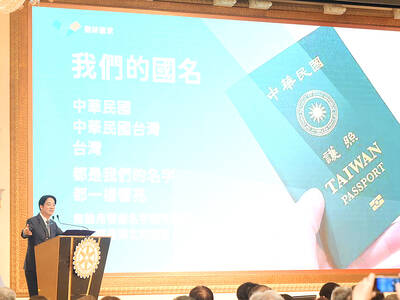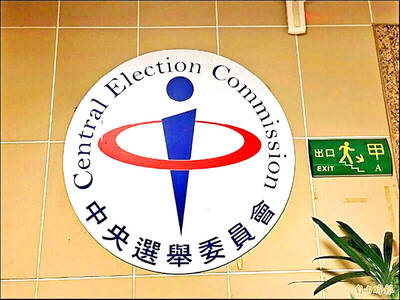A Taliban spokesman and a deputy to Pakistani Taliban chief Baitullah Mehsud said yesterday that he was not killed by a CIA missile strike, contradicting another aide who confirmed Mehsud’s death a day earlier.
The claims, made in calls to Pakistani and international media organizations, could undermine the growing confidence among US and Pakistani officials that Mehsud died. They also could be tactical maneuvers to prevent defections as the Taliban leadership searches for a successor to Mehsud or even to delay a decision on naming an heir.
Pakistani intelligence officials acknowledged yesterday that the missile strike said to have killed the Taliban chief was carried out with Islamabad’s help, indicating growing coordination between the two countries despite Pakistan’s official disapproval of the strikes.
Mehsud deputy, Hakimullah, and Taliban spokesman Maulvi Umar each called reporters yesterday to say that Mehsud was alive. They pledged evidence of his continued existence would be brought forth in the coming days.
The reports of his death “are just to discourage and destroy the morale of the Taliban,” Umar said.
Umar said Mehsud was with his fighters “sound and fit,” and not even injured. He said Mehsud would not be provoked into coming out into the open so soon because that would make him a target.
Hakimullah is one of the potential successors to lead the militant group. However, intelligence agents said it appears likely that Hakimullah may be passed over for the top position in favor of another Mehsud aide, Waliur Rehman.
Asked if Mehsud could call reporters, Hakimullah said it was not possible at the moment. Asked why he did not refute the reports of Mehsud’s death earlier in the week, the militant did not answer.
Mehsud’s aide Kafayat Ullah said a day earlier that Mehsud was killed with one of his two wives on Wednesday in his stronghold in the South Waziristan tribal region.
“I confirm that Baitullah Mehsud and his wife died in the American missile attack in South Waziristan,” Taliban commander Kafayat Ullah said by telephone.
A local tribesman, who also spoke on condition of anonymity, said Mehsud had been at his father-in-law’s house being treated for kidney pain, and had been put on a drip by a doctor, when the missile struck. The tribesman claimed he attended the Taliban chief’s funeral.
Pakistani and US officials said they were getting the same reports and were reasonably confident in them, but did not have forensic evidence such as a body for irrefutable confirmation.
Mahmood Shah, a former security chief for the tribal regions, was skeptical about the Taliban’s assertions Baitullah was alive, saying the claims could be part of a leadership struggle.
“If he was alive he could have spoken himself,” Shah said.
“There is, I think, a struggle going on for the leadership, and Hakimullah Mehsud is one of the contenders,” he said.
Pakistan considered the al-Qaeda-linked Mehsud its No. 1 internal threat. He was suspected in the assassination of former prime minister Benazir Bhutto and numerous suicide attacks across Pakistan.

FREEDOM OF NAVIGATION: The UK would continue to reinforce ties with Taiwan ‘in a wide range of areas’ as a part of a ‘strong unofficial relationship,’ a paper said The UK plans to conduct more freedom of navigation operations in the Taiwan Strait and the South China Sea, British Secretary of State for Foreign, Commonwealth and Development Affairs David Lammy told the British House of Commons on Tuesday. British Member of Parliament Desmond Swayne said that the Royal Navy’s HMS Spey had passed through the Taiwan Strait “in pursuit of vital international freedom of navigation in the South China Sea.” Swayne asked Lammy whether he agreed that it was “proper and lawful” to do so, and if the UK would continue to carry out similar operations. Lammy replied “yes” to both questions. The

‘OF COURSE A COUNTRY’: The president outlined that Taiwan has all the necessary features of a nation, including citizens, land, government and sovereignty President William Lai (賴清德) discussed the meaning of “nation” during a speech in New Taipei City last night, emphasizing that Taiwan is a country as he condemned China’s misinterpretation of UN Resolution 2758. The speech was the first in a series of 10 that Lai is scheduled to give across Taiwan. It is the responsibility of Taiwanese citizens to stand united to defend their national sovereignty, democracy, liberty, way of life and the future of the next generation, Lai said. This is the most important legacy the people of this era could pass on to future generations, he said. Lai went on to discuss

MISSION: The Indo-Pacific region is ‘the priority theater,’ where the task of deterrence extends across the entire region, including Taiwan, the US Pacific Fleet commander said The US Navy’s “mission of deterrence” in the Indo-Pacific theater applies to Taiwan, Pacific Fleet Commander Admiral Stephen Koehler told the South China Sea Conference on Tuesday. The conference, organized by the Center for Strategic and International Studies (CSIS), is an international platform for senior officials and experts from countries with security interests in the region. “The Pacific Fleet’s mission is to deter aggression across the Western Pacific, together with our allies and partners, and to prevail in combat if necessary, Koehler said in the event’s keynote speech. “That mission of deterrence applies regionwide — including the South China Sea and Taiwan,” he

UNPRECEDENTED: In addition to the approved recall motions, cases such as Ma Wen-chun’s in Nantou are still under review, while others lack enough signatures The Central Election Commission (CEC) announced yesterday that a recall vote would take place on July 26, after it approved the first batch of recall motions targeting 24 Chinese Nationalist Party (KMT) lawmakers and Hsinchu Mayor Ann Kao (高虹安). Taiwan is in the midst of an unprecedented wave of mass recall campaigns, following a civil society push that echoed a call made by Democratic Progressive Party (DPP) caucus whip Ker Chien-ming (柯建銘) in January to initiate signature drives aimed at unseating KMT legislators. Under the Civil Servants Election and Recall Act (公職人員選舉罷免法), Taiwanese can initiate a recall of district-elected lawmakers by collecting